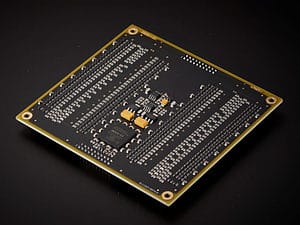Discrete R2R dac versus a sigma delta dac?

Discrete R2R (Resistor-to-Resistor) DACs and Sigma-Delta DACs are two different technologies used in digital-to-analog converters, each with its own set of advantages and disadvantages. Here are the advantages of a discrete R2R DAC compared to a Sigma-Delta DAC:
Simplicity and Linearity
- R2R DACs: Discrete R2R DACs have a simple architecture consisting of resistors arranged in a ladder network. This simplicity often results in excellent linearity, meaning they can accurately reproduce the input signal without introducing significant distortion.
- Sigma-Delta DACs: Sigma-Delta DACs use complex algorithms and feedback loops to achieve high resolution, but they are inherently non-linear. The conversion process involves oversampling and noise shaping, which can introduce nonlinearities, especially at lower bit depths.
Transparency and Sound Quality
- R2R DACs: Due to their linearity, R2R DACs are prized in high-end audio applications for their transparency and ability to preserve the original signal’s integrity. Audiophiles often prefer R2R DACs for their natural and musical sound reproduction.
- Sigma-Delta DACs: Sigma-Delta DACs are commonly used in consumer electronics due to their cost-effectiveness and ability to achieve high resolution. While they provide good performance for most applications, some audiophiles find their sound to be less natural or warm compared to R2R DACs.
Speed and Oversampling
- R2R DACs: R2R DACs are inherently fast and do not require extensive oversampling. They can directly convert the input signal into an analog output without the need for complex algorithms, making them suitable for applications where real-time processing is crucial.
- Sigma-Delta DACs: Sigma-Delta DACs often employ oversampling techniques to achieve high resolution. While oversampling improves resolution, it can introduce latency, making them less suitable for applications requiring real-time processing.
Durability and Stability
- R2R DACs: Discrete R2R DACs are constructed using individual resistors, which can provide stability and durability over time. They are less susceptible to temperature variations and external factors that might affect their performance.
- Sigma-Delta DACs: Sigma-Delta DACs, especially those integrated into microchips, can be sensitive to environmental conditions. They might require additional measures to maintain stability, especially in critical applications where consistent performance is essential.
It’s important to note that the choice between R2R and Sigma-Delta DACs depends on the specific application requirements, cost considerations, and the listener’s preferences regarding sound quality. Both technologies have their places in various industries, catering to different needs and preferences.
Discover our Digital to Analogue ConvertersDisclaimer: The information provided in this article is for general informational purposes only. While we strive to keep the information up to date and correct, we make no representations or warranties of any kind, express or implied, about the completeness, accuracy, reliability, suitability, or availability with respect to the article or the information, products, services, or related graphics contained in the article for any purpose.
